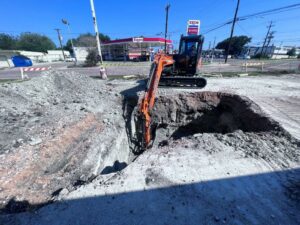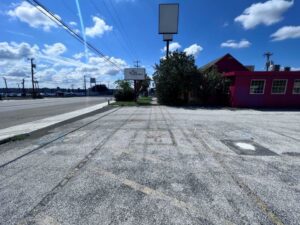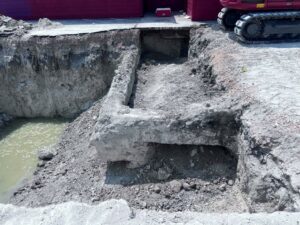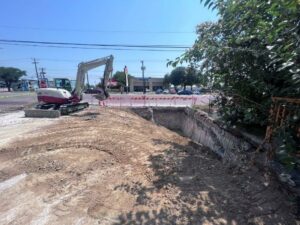In the Commercial, Industrial, Manufacturing, and Oil & Gas industries, the issue of ground contamination poses significant risks and liabilities. Contaminated sites can have severe environmental, health, and financial implications. That's why environmental due diligence services play a vital role in these sectors, helping businesses assess and remediate ground contamination effectively.
Commercial Sector:
Commercial properties, such as shopping centers, office buildings, and hotels, are often built on previously developed land, increasing the potential for ground contamination. Environmental due diligence is essential to evaluate the history of these properties, assess potential sources of contamination, and identify any existing or potential risks. By conducting thorough assessments, businesses can make informed decisions regarding property acquisition or redevelopment, ensuring they understand the scope of contamination and the necessary remediation measures.
Industrial Sector:
Industries such as manufacturing, construction, and chemical production can contribute to ground contamination through improper waste management, accidental spills, or historical pollution. Environmental due diligence services are critical for identifying contaminated areas within industrial facilities, assessing the extent of the contamination, and evaluating the associated risks. This information helps businesses implement effective remediation strategies, prevent further contamination, and comply with regulatory requirements.
Manufacturing Sector:
The manufacturing industry often deals with hazardous substances and materials that can lead to ground contamination if not handled properly. Environmental due diligence focuses on evaluating manufacturing processes, storage practices, and waste management protocols to identify potential sources of contamination. By conducting thorough assessments, manufacturers can identify contaminated areas, determine the extent of the contamination, and develop remediation plans to restore the affected sites. This helps protect the environment, prevent further spread of contaminants, and mitigate potential legal and financial liabilities.
Oil & Gas Sector:
The extraction, production, and transportation activities in the Oil & Gas industry carry inherent risks of ground contamination, such as oil spills, leaks, and improper waste disposal. Environmental due diligence services play a crucial role in assessing and managing these risks. Through comprehensive assessments, businesses in this sector can identify contaminated areas, evaluate the extent of contamination, and implement appropriate remediation measures. By addressing ground contamination promptly and effectively, oil and gas companies can minimize environmental damage, protect water resources, and maintain compliance with regulations.
In conclusion, environmental due diligence services are vital in the Commercial, Industrial, Manufacturing, and Oil & Gas industries to assess and remediate ground contamination effectively. By conducting thorough assessments, businesses can identify potential sources of contamination, evaluate the extent of the problem, and develop appropriate remediation strategies. This helps protect the environment, safeguard human health, and mitigate potential legal and financial risks associated with ground contamination. Embracing environmental due diligence is not only a responsible approach but also a strategic opportunity to address contamination issues, ensure regulatory compliance, and promote a cleaner and safer future.
Project Spotlight
1940's Historic Sinclair Petroleum Storage Tank Site in San Antonio, TX




The petroleum products used at the property contained Tetraethyl Lead, as well as common petroleum chemicals that impacted shallow soil at the property. Based on the findings from the phase 1 and Phase 2 Environmental Site Assessments (ESA's), it was determined that soil in the upper 10 feet required removal and offsite disposal. Approximately, 800 cubic square yards of class 2 non-hazardous waste was loaded, transported, and disposed at a licensed landfill disposal facility. After receiving passing confirmation sample results, the excavations were backfilled with imported fill and the site was restored. The TCEQ closure report was submitted for consideration of no further action.

